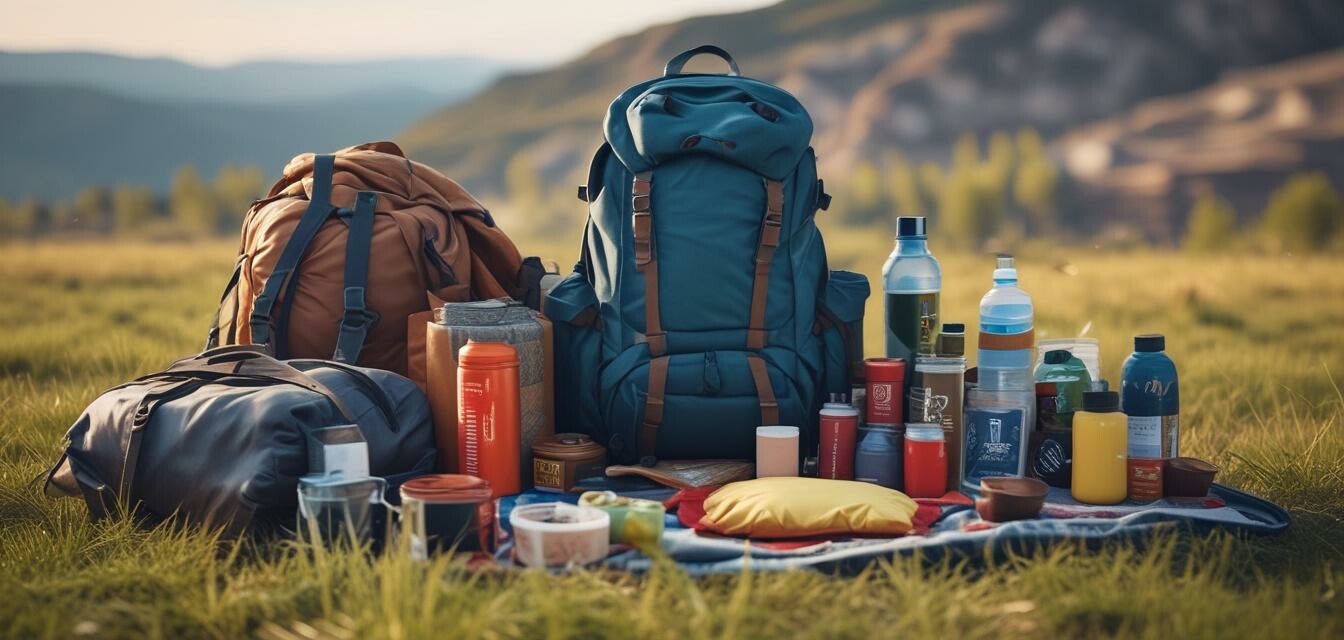
How to prepare your backpack for an overnight trip
Key Takeaways
- Always start with a proper packing list tailored to your trip.
- Pack wisely, balancing weight and accessibility to essential items.
- Utilize various compartments of the backpack for better organization.
- Don’t forget to test your pack before hitting the trail.
- Consider the weather and tailor your gear accordingly.
Embarking on an overnight adventure requires thorough preparation, not only for a memorable experience but also for comfort and safety. Your backpack is your best ally on this journey, as it carries your essential belongings. In this guide, we will walk you through the essential steps to prepare your backpack for an overnight trip. Whether you're a novice adventurer or a seasoned hiker, our tips can help enhance your outdoor experience.
Essential steps to prepare your backpack
The first step to a successful overnight trip is ensuring your backpack is ready for the journey ahead. Let’s explore the preparation process step by step.
1. Choose the right backpack
Selecting the right backpack is crucial. The pack should fit comfortably and suit your adventure needs. Generally, you’ll need:
- A daypack for short trips.
- A weekender pack for overnight excursions.
- Consider features such as a hydration system, lightweight fabric, and adjustable straps.
2. Create a packing list
Make a detailed packing list tailored to your trip. Some basic items to consider include:
- Shelter (tent or hammock)
- Sleeping gear (sleeping bag, sleeping pad)
- Clothing (weather-appropriate layers)
- Food and cooking gear
- First aid kit
- Navigation tools (map, compass, GPS)
By using a packing list, you can ensure you don't forget any essential items for your adventure.
3. Organize your gear
Organization within your backpack is vital for easy access to your essentials. Here’s how to do it:
- Use compression sacks for clothing and sleeping gear to save space.
- Store heavier items close to your back for better weight distribution.
- Keep frequently used items in outer pockets for easy access.
4. Weight distribution
Proper weight distribution can make a significant difference during your hike. Follow these guidelines:
- Pack heavy items at the bottom and close to your back.
- Distribute weight evenly on both sides of the pack.
- Position lighter items toward the top.
5. Test your pack
Before heading out, it’s essential to test your pack. Take a short hike to ensure:
- The backpack fits comfortably and correctly.
- You can adjust the straps easily.
- You can effectively access items when needed.
6. Prepare for weather conditions
Weather can change quickly in the wilderness, so be prepared. Consider the following:
- Check weather forecasts prior to departure.
- Pack rain gear or extra layers if needed.
- Ensure your shelter is suitable for the conditions.
Packing tips to maximize functionality
To make your hiking experience smooth and enjoyable, consider these packing tips:
- Use ziplock bags to keep electronics and food dry.
- Pack a lightweight tarp to lay your gear on wet ground.
- Use a multi-tool for various tasks on the trail.
Staying organized on the trail
Staying organized while hiking can elevate your adventure. Here are some strategies:
- Maintain a consistent packing routine each time you go on a trip.
- Use color-coded bags or labels for easy recognition of your contents.
- Invest in a backpack with designated compartments for specific items.
Conclusion
Preparing your backpack for an overnight trip involves careful planning, organization, and weight management. With the essential steps and tips outlined here, you'll be well-equipped for your outdoor adventure. Always remember to choose the right backpack, create a comprehensive packing list, and organize your gear effectively. By following these strategies, you can enjoy a comfortable and enjoyable hiking experience.
Pros
- Enhances outdoor experience through better organization.
- Improves comfort and reduces fatigue during hikes.
- Ensures you have essential items readily accessible.
- Prepares you for unexpected weather changes.
Cons
- Requires planning and time investment.
- Overpacking can lead to unnecessary weight.
- May take practice to perfect the setup.
Further Reading
If you want to expand your knowledge about backpacks and outdoor adventures, check out our other resources: